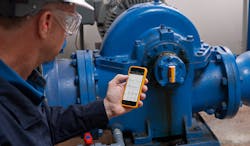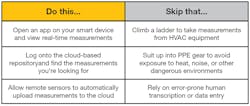Engineering Safer Environments With Remote Sensors
Governments have passed laws holding businesses responsible for providing employees with a safe working environment. Workplace conditions that pose a risk to personnel should be avoided or training completed to minimize hazards.
Thankfully, advances in technology are making it easier for facilities to improve worker safety by decreasing contact personnel have with running machinery or dangerous areas. Providing a safe environment ensures that businesses maintain regulatory compliance and improves morale.
What Are the Regulations?
Multiple organizations (private and governmental) provide practices and procedures to promote workplace safety. While regulations are comprehensive and depend on government enforcement, many organizations help businesses comply with laws or guidelines:
- The CDC’s National Institute for Occupational Safety and Health Education (NIOSH)
- The Department of Labor’s Occupational Safety and Health Administration (OSHA)
- The Department of Labor’s Mine Safety and Health Administration (MSHA)
- International Organization for Standardization (ISO)
- American Society of Safety Professionals (ASSP)
- American National Standards Institute (ANSI)
- Health & Safety Institute (HSI, USA)
- Health & Safety Executive (HSE, UK)
An Ohio Bureau of Worker’s Compensation report (2011) determined that injury claims dropped 88% in organizations that implemented a worker safety program.
According to OSHA, occupational injuries and illnesses cost businesses more than $170 billion a year. Implementing a safety program can decrease these costs by 20 to 40% while also increasing uptime and boosting morale.
Using Technology to Improve Safety
Hazard mitigation, or “Engineering Controls”, are practices put in place that limit the interaction between workers and dangerous situations, whether the risks are chemical or physical in nature.
The invention of PPE at the beginning of the 20th century separated workers from chemicals while control rooms and robotics minimized personnel running individual pieces of equipment. The expansion of the industrial internet of things (IIoT) technologies brings with it new ways to accomplish worker safety initiatives.
Reducing Risks via Remote Sensors
Deploying a system of interconnected, IIoT-enhanced devices into your safety program can reduce worker interaction with hazards.
One of the most common interactions for those working with machinery is routine measurement taking. Manual routes using handheld tools require personnel to be at assets, possibly within hazardous areas. Minimize contact by using remote sensors to take measurements.
Safety doesn’t just mean intrinsically unsafe conditions, such as working with live equipment or climbing ladders. Breakdowns in equipment can spill chemicals, release foreign bodies into machinery lubricants or cause worker injuries. Installing sensors allows teams to monitor asset status and make repairs based on condition, rather than a schedule. Assets maintained using condition-based practices are less likely to have unexpected downtime or cause unsafe environments.
According to OSHA, a 50-person plant increased productivity by 13% and saved more than $265,000 in faulty products by implementing a rigorous safety and health program.
Not only will implementing remote monitors improve your safety program and cut costs, but OSHA also says that businesses with fewer injuries are often rated as “better places to work”.
Sensors for a Safer Environment
Vibration Screening
Ideal sensors continually aggregate data into the cloud. Having “Around the Clock” vibration data—such as vibration severity and surface temperature—allows teams to compare to historical statistics, determine root cause or schedule maintenance at the precise moment needed.
Power Monitoring
Power monitors are ideally internally powered and wireless, as relying on AC/DC power when troubleshooting power problems is not ideal. Aggregating current, voltage, frequency, and energy consumption change allows maintenance and reliability professionals to find load fluctuations in operating equipment. Screening asset performance allows users to detect premature wear in machinery.
Software
Any software purchased should not only work with the sensors but with other (even third-party) industrial solutions. An interconnected and incompatible system allows teams to leverage data to the max. It also automates the collection, storage, and organization of data, assets, work orders, and more. Software is also what sends the alarms to user’s devices, data outside the indicated thresholds being the trigger of the software’s actions.
Connected Reliability Framework
Of course, the end goal is to have any and all data, when and where you need it the most. Having information—run-time or cycle counts from SCADA/PLC systems, real-time condition data from sensors, work order histories, blueprints or schematics—all at a maintenance professional’s fingertips whether they’re in the office or on a remote job site.
This concept provides the roadmap for predictive maintenance, empowering workforces to make informed decisions about asset health.

